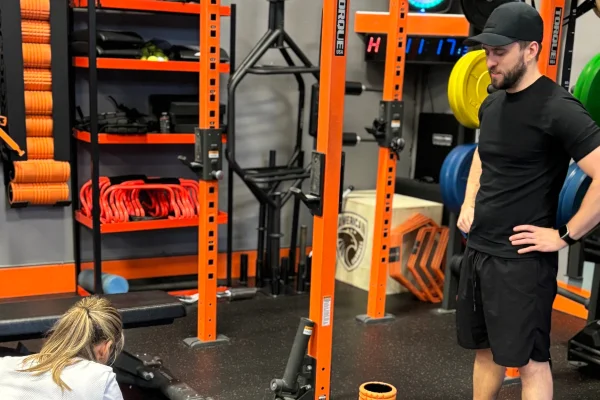

Many people think of asymmetrical training as an advanced method used to challenge stability or improve core strength, and they’re not wrong. Holding a dumbbell on just one side during a split squat or loading one side of a barbell can absolutely train your body in a way that creates more core demand and challenges your ability to stabilize. But the benefits of asymmetrical training can go far beyond that. When applied with intention and an understanding of biomechanics, asymmetrical training can become one of the most effective tools for restoring balance and movement throughout the body.
I’ve talked in previous blogs about how many people are neurologically and posturally shifted into one side of their body, usually due to compensation patterns that start with breathing. Over time, these shifts become our default. They change how we load our joints, how we move through space, and even how we recover from training. Asymmetrical training can help shift us back toward a more balanced state by restoring relative motion at the joints. For example, if someone is stuck in their right hip, which is incredibly common, our goal is to help them get out of that right side and reorient into the left. Using a split squat as the example, we can load the dumbbell on the same side as the working leg (ipsilateral) to promote external rotation at the pelvis, turning the hip away from the front leg. On the other side, we might want to use contralateral loading to promote internal rotation into the working hip. We can also pair that with things like heel lifts, foot pressure cues, and breathing strategies to guide movement exactly where we want it.
The same logic applies to upper body training. An offset push-up, with one hand elevated on a plate or block and the other on the floor, can be used to rotate the thorax and change the shape of the ribcage. The elevated side receives more compression while the grounded side is encouraged to expand, helping to restore the ability to rotate the upper spine in both directions. This style of training isn’t something you’ll find in your typical small group fitness class, but at AIM Athletic, this is part of how we think, especially when we’re working with members in personal training, active rehab, and even our hockey training programs. The goal is to improve how you move so you can train harder, recover better, and stay healthy doing the things you love.
Whether you're recovering from injury, trying to move more efficiently, or just want to take your training to the next level, asymmetrical training is one of the tools we use to make that happen. It’s not just about loading one side to make things harder. It’s about loading one side to make you better.
You've got the info, now it's time to take AIM!